- Clone
- 6/40c (See other available formats)
- Regulatory Status
- RUO
- Other Names
- CEACAM8, CD67, CGM6, NCA-95
- Isotype
- Mouse IgG1, κ
- Ave. Rating
- Submit a Review
- Product Citations
- publications
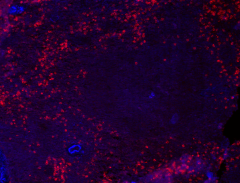
-

Human paraffin-embedded spleen tissue slices were prepared with a standard protocol of deparaffinization and rehydration. Antigen retrieval was done with Citrate buffer 1X pH 6.0 at 95°C for 40 minutes. Tissue was washed with PBS/0.05% Tween 20 twice for five minutes and blocked with 5% FBS and 0.2% gelatin for 30 minutes. Then, the tissue was stained with 10 µg/mL of anti-human CD66b (clone 6/40c) Alexa Fluor® 647 (red) at 4°C overnight. Nuclei were counterstained with DAPI (blue). The image was scanned with a 10X objective and stitched with Metamorph® software. -

Human peripheral blood granulocytes were stained with CD66b (clone 6/40c) Alexa Fluor® 647 (filled histogram) or mouse IgG1, κ isotype control (clone MOPC-21) Alexa Fluor® 647 (open histogram).
| Cat # | Size | Price | Quantity Check Availability | Save | ||
|---|---|---|---|---|---|---|
| 392911 | 25 µg | 132€ | ||||
| 392912 | 100 µg | 310€ | ||||
CD66b is a 95-100 kD glycosylphosphatidylinositol (GPI)-linked protein also known as CD67, CGM6, and NCA-95. CD66b is a member of the immunoglobulin superfamily, carcinoembryonic antigen (CEA)-like subfamily. CD66b, expressed on granulocytes, has been reported to induce activation in neutrophils and to be involved in heterophilic adhesion with CD66c.
Product DetailsProduct Details
- Verified Reactivity
- Human
- Antibody Type
- Monoclonal
- Host Species
- Mouse
- Immunogen
- Recombinant soluble human CEACAM8-Fc produced in HEK293 cells
- Formulation
- Phosphate-buffered solution, pH 7.2, containing 0.09% sodium azide.
- Preparation
- The antibody was purified by affinity chromatography and conjugated with Alexa Fluor® 647 under optimal conditions.
- Concentration
- 0.5 mg/ml
- Storage & Handling
- The antibody solution should be stored undiluted between 2°C and 8°C, and protected from prolonged exposure to light. Do not freeze.
- Application
-
IHC-P - Quality tested
FC - Verified - Recommended Usage
-
Each lot of this antibody is quality control tested by formalin-fixed paraffin-embedded immunohistochemical staining. For immunohistochemistry, a concentration range of 5.0 - 10 µg/mL is suggested. It is recommended that the reagent be titrated for optimal performance for each application.
* Alexa Fluor® 647 has a maximum emission of 668 nm when it is excited at 633 nm / 635 nm.
Alexa Fluor® and Pacific Blue™ are trademarks of Life Technologies Corporation.
View full statement regarding label licenses - Application References
-
- Singer, et al. 2014. PLoS One. 9(4):e94106. PMID: 24743304
- Klaile, et al. 2013. Respir Res. 14:85. PMID 23941132
- RRID
-
AB_2814338 (BioLegend Cat. No. 392911)
AB_2814339 (BioLegend Cat. No. 392912)
Antigen Details
- Structure
- Ig superfamily, CEA antigen group, GPI-linked glycoprotein
- Distribution
-
Granulocytes
- Function
- Cell adhesion, neutrophil activation
- Ligand/Receptor
- CD66c
- Cell Type
- Granulocytes
- Biology Area
- Immunology
- Molecular Family
- Adhesion Molecules, CD Molecules
- Antigen References
-
- Kuijpers T, et al. 1993. J Immunol. 151:4934.
- Kuroki M, et al. 1992. J Leuk Biol. 52:551.
- Gene ID
- 1088 View all products for this Gene ID
- UniProt
- View information about CD66b on UniProt.org
Related FAQs
Other Formats
View All CD66b Reagents Request Custom Conjugation| Description | Clone | Applications |
|---|---|---|
| Purified anti-human CD66b | 6/40c | FC,IHC-P,SB |
| PE anti-human CD66b | 6/40c | FC |
| TotalSeq™-A0166 anti-human CD66b | 6/40c | PG |
| Alexa Fluor® 594 anti-human CD66b | 6/40c | IHC-P |
| TotalSeq™-C0166 anti-human CD66b | 6/40c | PG |
| Alexa Fluor® 647 anti-human CD66b | 6/40c | IHC-P,FC |
| TotalSeq™-B0166 anti-human CD66b | 6/40c | PG |
| PE/Fire™ 640 anti-human CD66b Antibody | 6/40c | FC |
| Brilliant Violet 421™ anti-human CD66b Antibody | 6/40c | FC,IHC-P |
| TotalSeq™-D0166 anti-human CD66b | 6/40c | PG |
| TotalSeq™-Bn0166 anti-human CD66b | 6/40c | SB |
Customers Also Purchased

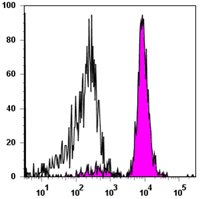
Compare Data Across All Formats
This data display is provided for general comparisons between formats.
Your actual data may vary due to variations in samples, target cells, instruments and their settings, staining conditions, and other factors.
If you need assistance with selecting the best format contact our expert technical support team.
-
Purified anti-human CD66b
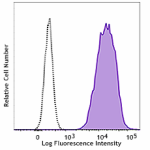
Human peripheral blood granulocytes was stained with CD66b (... 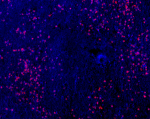
Human paraffin-embedded spleen tissue slices were prepared w... 
SeqIF™ (sequential immunofluorescence) staining on COMET™ of... -
PE anti-human CD66b
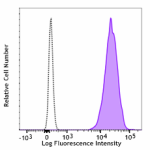
Human peripheral blood granulocytes were stained with CD66b ... -
TotalSeq™-A0166 anti-human CD66b
-
Alexa Fluor® 594 anti-human CD66b
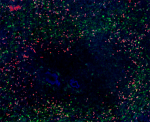
Human paraffin-embedded spleen tissue slices were prepared w... -
TotalSeq™-C0166 anti-human CD66b
-
Alexa Fluor® 647 anti-human CD66b
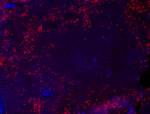
Human paraffin-embedded spleen tissue slices were prepared w... 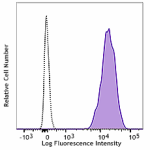
Human peripheral blood granulocytes were stained with CD66b ... -
TotalSeq™-B0166 anti-human CD66b
-
PE/Fire™ 640 anti-human CD66b Antibody
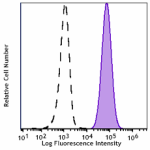
Human peripheral blood granulocytes were stained with anti-h... -
Brilliant Violet 421™ anti-human CD66b Antibody
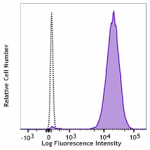
Human peripheral blood granulocytes were stained with CD66b ... 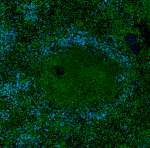
Human paraffin-embedded spleen tissue slices were prepared w... -
TotalSeq™-D0166 anti-human CD66b
-
TotalSeq™-Bn0166 anti-human CD66b
 Login / Register
Login / Register 











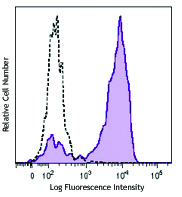



Follow Us